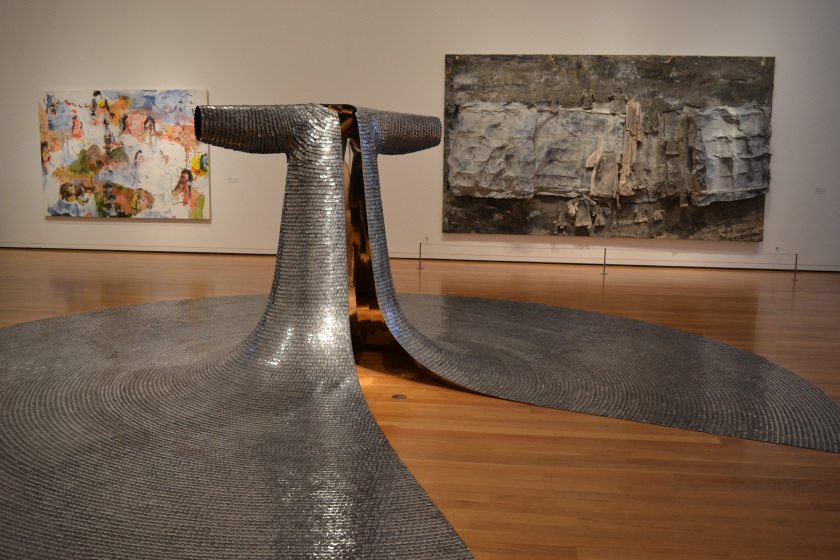Meet Do Ho Suh by Destiny Morgan

Seoul, Korea, 1962 is where and when Do Ho Suh came into this world. He served a term in the south Korean military and attended Seoul National University were he earned his BFA and MFA in oriental painting. Later he relocated and continued his study in the United states at the Rhode Island school of design and also Yale University. He is best known for his convoluted sculptures of which are more than just objects to look at. He is interested in how people interact with, view, and occupy public space. With that being said, people can literally walk on some of these sculptures, the floor sculptures.

As you can see here, these people are standing on top of thousands of unique and tiny human figures.

Another one of his floor sculptures is titled “Some/One”. In this work, there is a covering of hundreds of military dog tags on the ground which rise one on top of the other to form an empty suit of armor. This phantom armor reveals the reality of how a military is made up of individual soldiers.


Another outstanding work of his is “Rubbing/Loving”. In which he covers his old apartment, in New York, entirely with white paper and then rubs every inch with a colored pencil capturing all of the memories from years of inhabiting the space. Below is a clip that shows the art in the making and in this clip he explains the reason for the title which is truly beautiful on it’s own. This would be his final artwork in this apartment for he had done some works with and in it previously.
Do Ho Suh’s work often deals with space and how we perceive it. He works with a variety of mediums to create pieces that provoke us to think more deeply of the places we inhabit as human beings and what those places mean to us.

Suh’s work has been featured in the following museums: Seattle Art Museum and Seattle Asian Art Museum, Whitney Museum of American Art at Philip Morris, Serpentine Gallery in London, and Kemper Museum of Contemporary Art in Kansas City, Missouri. Do Ho Suh also represented Korea at the Venice Biennale in 2001.
References:
https://www.art21.org/artists/do-ho-suh
https://www.youtube.com
Images:
payload342.cargocollective.com/1/12/405796/9141571/mmca_3.jpg
www.art21.org/files/imagecache/explore_body_full/images/suh-rubbing-still-057.jpg
https://s-media-cache-ak0.pinimg.com/736x/59/13/68/591368f067e7aa8bd90f2c3a478fc06d.jpg
mymodernmet.com/wp/wp-content/uploads/archive/MZFAtDXxHNIIHBHsQ4Kw_1082087592.jpeg
https://richardjunsangcho4d.files.wordpress.com/2016/04/seattle-art-museum-do-ho-suh-some-one.jpg
dd50b9f9721513d95259-12857791395075bdb2cd852465f689fc.r36.cf1.rackcdn.com/14TAGS.jpg















